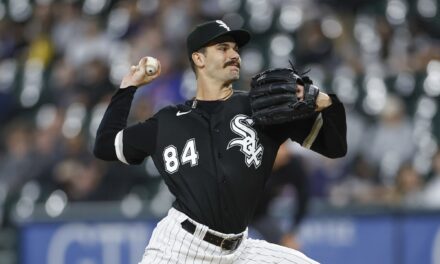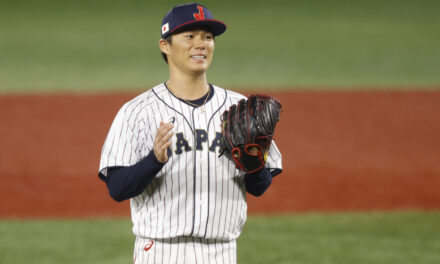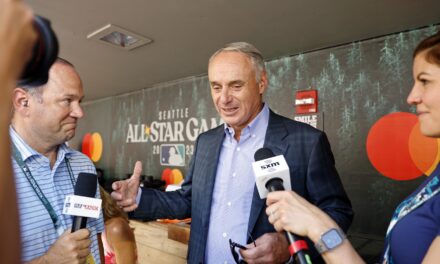This fan-shot is by Tom Sokol
Baseball’s starting pitchers are throwing harder and getting injured at a higher rate than ever before. Starting pitcher innings and pitch counts are decreasing year after year. Something needs to change in baseball around the starting pitcher, and one possibility is the idea of a six-man rotation.
We already see six-man rotations in Japan, and we saw it in MLB with the Angels last season to help accommodate two-way superstar Shohei Ohtani. We’ve even seen it with the Mets last season in a hybrid model to accommodate Kodai Senga, who was coming over from Japan and was more accustomed to that extra day of rest. But even with Senga expected to miss the first few weeks/months of the season, does it still make sense for the Mets to try a six-man rotation?
When David Stearns appeared on the spring training broadcast with Gary and Ron this weekend, he mentioned that he wants the Mets to be ahead of baseball trends rather than chasing trends from the past five to ten years. A six-man rotation could be an opportunity for the Mets to be ahead of one of those trends.
To see if this idea is worthwhile, let’s look at starting pitching ERAs throughout baseball the past few seasons. This chart below shows that we have now had four consecutive seasons where 5 days rest is producing better results than 4 days rest. Four straight years of at least a 0.10 difference in ERA is no fluke, and I would expect this to only get more drastic going forward based on recent increases in pitching injuries/fatigue.

To break this down further, using the average from the last three years (starting with the post-COVID season), the ERA for 4 days rest is 4.28 compared to 4.09 for 5 days rest. Taking these numbers, if we added a sixth starter with a 5.00 ERA (a conservative number) to the 5-day rest/6-man rotation, their total ERA would be 4.24, which is still better than the 4.28 from the 4-day rest/5-man rotation. So, using league averages, the Mets (or any team) would just need replacement-level production from their 6th starter for this to be worthwhile. And this does not even factor in the potential benefits of reducing injuries and keeping the rotation fresher throughout the length of the season.
The Mets have countless candidates who can be added as a sixth starter and give them a sub-5.00 ERA. Joey Lucchesi, Tylor Megill and Jose Butto all had ERAs below five last season (Megill’s being the highest at 4.70), and if none of these candidates perform, well, they also have Dominic Hamel, Mike Vasil and Christian Scott in Triple-A, who are all close to being Major League ready. Any of these starters will likely be good enough to give the Mets an advantage if they switch to a 6-man rotation based on these league-wide averages.
Let’s look at 4 days vs 5 days rest for the top six Mets rotation candidates, including Senga. These results are more mixed than the league averages, mostly due to Sean Manaea’s reverse rest splits. However, Manaea’s splits are particularly strange because although he’s worse on 5 days rest than 4 days rest, he has actually performed well on 6+ days rest with a 3.61 ERA, similar to his 4-day rest numbers. Given the inconsistencies, this seems like a fluke due to a smaller sample size, but even if he struggles in a six-man rotation, he can also be moved to the bullpen as he was last season with San Francisco, or the Mets can return to the hybrid model and use him every fifth day.

When Kodai Senga returns, a full-blown six-man rotation seems like the best option for the Mets, but even before his return, a six-man rotation could be viable. Going to a six-man rotation would allow the Mets’ older/recently injured starters to get some extra rest and potentially keep them healthier/more effective late in the season. It would also give an opportunity to young players as the Mets look to evaluate their rotation needs for next season as well.
The Mets are projected to be a borderline playoff team, likely looking just outside of the playoff picture as currently constructed. They need to be creative in order to maximize the value of their roster, and a six-man rotation would potentially give them leverage over the rest of the league, and it would give some younger players a chance to prove themselves and earn a spot in the rotation next season. If David Stearns wants the Mets to be ahead on league trends, then a season-long six-man rotation may be one way to do so.
* * * * * * *
This MMO Fan Shot was contributed by Tom Sokol. Have something you want to say? Share your opinions with the best and most diverse Mets community on the web! Send your Fan Shot to [email protected]
















